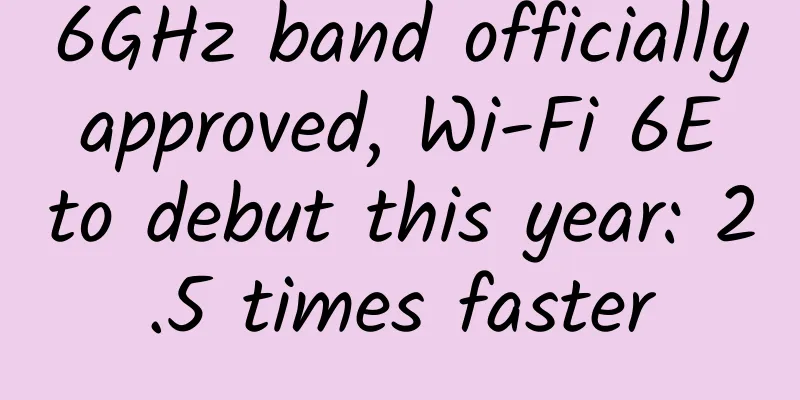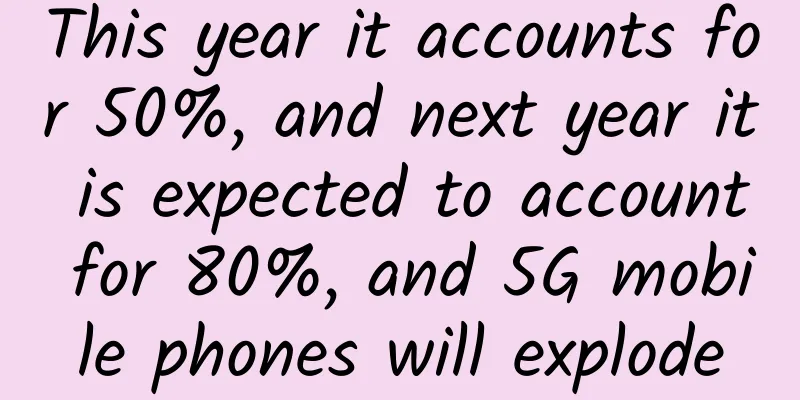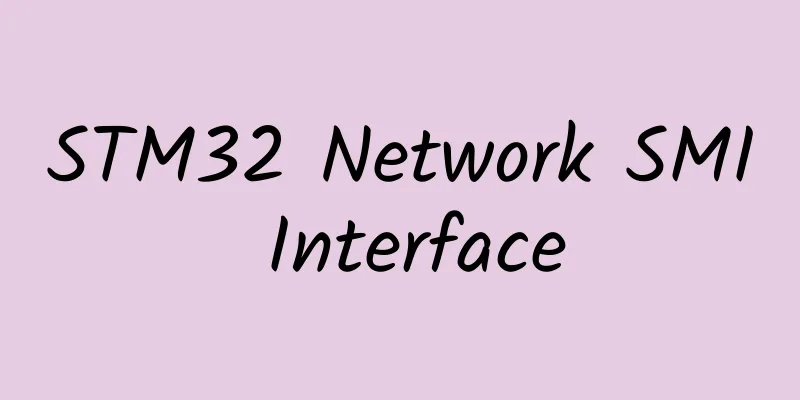Risks and opportunities in the 5G era

|
At the end of 2018, the 5G frequency allocation of the three major domestic operators was finally settled. China Telecom and China Unicom each received 100M (megahertz) frequency in the 3.5GHz (gigahertz) frequency band; China Mobile received a total of 260M frequency in the 2.6GHz and 4.9GHz frequency bands. According to the frequency licenses obtained, the three major operators can carry out 5G trials across the country. The last shoe has dropped, and we can finally be sure that 2019 will be the "first year of 5G" in China. Any breakthrough in basic technology will eventually be transmitted to the commercial level. The more basic the technology, the greater the impact it will have. Looking back to 2014, when 4G was fully rolled out, the mobile Internet reached its peak of development. In the four years since then, the giant Baidu has fallen at a visible speed due to its slow layout. On the other hand, Internet upstarts such as Didi, Toutiao, Meituan, and Kuaishou took advantage of the situation and quickly penetrated into people's lives in the mobile Internet era, achieving huge commercial success. The widespread use of 4G has fundamentally changed people’s lifestyles and has also spawned a number of new unicorn companies. New technologies bring new production methods, and new production methods will give birth to more powerful productivity. In this process, some people found the right access method and became heroes by the times; others missed the opportunity to access and were overtaken by others, saying "no guilt". The lower the level of technology, the greater the turbulence. 5G is not a groundbreaking technology, but it is more than enough to overturn the "second half of the Internet". Application scenarios of 5G In the minds of ordinary users, 5G may only mean "higher network speed". But in fact, according to the International Telecommunication Union (ITU), the application scenarios of 5G systems, in addition to "mobile broadband enhancement" (high network speed), also include "low-power massive connections" and "low latency and high reliability". Among them, "mobile broadband enhancement" can be further divided into two scenarios: "wide-area continuous coverage" and "high-capacity hotspots". The characteristics of the former are reflected in the breadth of coverage, with the goal of ensuring user mobility and business continuity, providing users with high-speed business experience anytime and anywhere. The latter is reflected in "quality". In large gatherings such as stadiums or concerts, it provides users with extremely high data transmission rates to meet extremely high traffic density requirements. In simple terms, you can access the Internet anywhere. Not only can you access the Internet, but you can also access it quickly and with high fidelity. "Low-power massive connections" are mainly aimed at application scenarios such as smart cities and environmental monitoring that focus on sensing and data collection. It has the characteristics of small data packets, low power consumption, and massive connections. It not only has the ability to support over 100 billion connections and meet the connection density indicator of 1 million per square kilometer, but can also ensure ultra-low power consumption and ultra-low cost of the terminals. It is precisely because of this scenario that the progress of the Internet of Things will be accelerated again, and the so-called "Internet of Everything" will eventually become a reality. The phrase that is often mentioned recently, "4G changes life, 5G changes society" also originated from this. As for "low latency and high reliability", it is mainly aimed at special application needs in vertical industries such as Internet of Vehicles and industrial control. Such applications have extremely high requirements for latency and reliability, and need to provide users with millisecond-level end-to-end latency and nearly 100% service reliability. Specifically, in this scenario, 5G can achieve a delay of less than 10 milliseconds, which means that the automatic control braking is almost the same as the human braking reaction time. In addition, 5G can realize computing at the edge of the base station, which means that the autonomous driving data can be processed on the network closest to the car, instead of uploading it to a relatively farther block computer room. This will also shorten the reaction time of autonomous driving. It should be noted that the network designs corresponding to the above three application scenarios are different. Through the separation of BBU functions and the sinking of core network parts, 5G splits and refines the network through "slicing", thus achieving flexible response to scenario requirements. In other words, there is no omnipotent crystal ball that can simultaneously meet the demands of 1, 2, or 3 different scenarios with the same structure. In terms of implementation, 5G logically divides the physical network into N logical networks, and different logical networks serve different scenarios. As a result, the effect of a "Swiss Army knife" multifunctional network was achieved. C-end Vision In fact, compared with the impact of 5G on the industry side, the imagination space of this technology on the C-side is not too large. But this is only relatively speaking, "the impact on the industry side is too strong, which makes the C-side not so strong." Take it alone, the chain changes caused by 5G on the C-side will also have a huge impact on our lives and some industries, and even subvert them. Telecommunications Services The first thing that everyone is concerned about is the traffic fee. In the minds of ordinary people, all operators are trying their best to earn money from our traffic. But in fact, the consumer market for telecom services is already saturated, with a user penetration rate of 109%. ARPU (average monthly revenue per user) fell by 51% in the first half of 2018, far exceeding the 50% annual decline target set by the state for operators. According to statistics from Huatai Securities, China Mobile's year-on-year revenue growth rate has shown a downward trend since the second quarter of 2017; China Telecom's overall year-on-year revenue growth rate has declined since the first quarter of 2016; China Unicom's revenue growth rate has improved in the past year with the help of mixed-ownership reform, but its revenue growth rate also declined for two consecutive quarters in the second and third quarters of 2018. Overall, the operators' business volume increased but their revenue did not, and the gap between them continued to widen. According to data from the Ministry of Industry and Information Technology, in the first three quarters of 2018, the total volume of telecommunications business reached 4367.1 billion yuan, a year-on-year increase of 139.8%; but the total revenue from telecommunications business reached 991.5 billion yuan, a year-on-year increase of only 3%. Wei Leping, executive deputy director of the Ministry of Industry and Information Technology's Communications Science and Technology Committee, said, "With 5G technology, there is little hope of relying on traffic revenue, as traffic revenue peaked in 2019." On the other hand, in the future 5G era of intelligent interconnection of all things, unlike the era of smartphones, operators have end-to-end ecological control capabilities from the beginning, which also means that they are more capable of obtaining greater value in the Internet of Things. In this context, major operators will also focus more on the goal of "returning to the center of the ecosystem." In recent years, major Internet OTTs have been very popular, and operators can only play the role of "pipelines" as a background wall. The advent of 5G is a very good opportunity for operators. They will try to enhance the brand effect and improve user "stickiness" through platforms and applications. Inspired by such a vision, no operator would be willing to set too high a threshold for users in terms of traffic fees. Virtual Reality 2016 is the so-called "first year of VR". From the beginning, the concept of VR was placed on the altar, and major investors flocked to it. At the end of the year, it ushered in the "capital winter", followed by a series of layoffs and bankruptcies. VR gradually cooled down. Facts have proven that it was a farce hastily created by capital. After all that trouble, many people began to wonder whether VR was overhyped or a false demand. This mentality is a typical example of "sliding from one extreme to another." In fact, the VR field was still a mess at the beginning of 2016. Whether it was a PC headset or an all-in-one machine, each had its own operating system and content platform. With the launch of Google Daydream and Microsoft Windows' built-in support for VR, the industry has been initially standardized. In a sense, it can indeed be regarded as the "first year of VR." However, due to the immaturity of the entire field's infrastructure, the possibility of VR landing was very small. Among them, the demand for "large bandwidth and low latency" in the network could not be well met at the time. 5G can solve this problem. In addition, hardware technologies such as display screens and graphics chips have also developed rapidly in the past two years. Zhang Yong, director of China Unicom Research Institute, believes that VR may be the first large-scale application scenario of 5G. It has been gradually industrialized and is expected to usher in a big explosion in the VR industry in 2021. By then, high-end, heavy-experience gaming and entertainment consumption patterns will have a huge impact on existing related industries. On the one hand, existing game and content companies will face challenges from new competitors. On the other hand, upstream graphics card and chip manufacturers, as well as VR game and VR content development engines, and even related companies or practitioners such as eye tracking and optical positioning will all reap the belated dividends. It is worth noting here that due to the characteristics of the times, the fragmentation of information intake methods, and the richness of information distribution, the boundaries between content consumption markets are becoming increasingly blurred. When we talk about entertainment consumption, we often think of games or movies, etc. But in fact, writers will also be affected by this wave. All content consumption is essentially an occupation of user time. Therefore, when the attractiveness of a certain consumption model increases sharply, it will inevitably lead to a reduction in the consumption market of other content carrier models. In addition to the above two points, 5G will also have an impact on the lives of ordinary users in many areas, such as the implementation of higher-definition 4K video. It is understood that 4K video streaming requires a minimum download speed of 25MBps, while 5G will be able to provide a minimum download speed of 100MBps, while 4G will be less than 10MBps. There is also the live broadcast field, such as sports live broadcast (skiing, rally, etc.) in areas such as mountains where it is inconvenient to lay optical fiber, outdoor live broadcast (more Bear Grylls may emerge with just a mobile phone), and public safety (such as wild search and rescue) and other specific scenarios. Industry Prospects "4G is more about technological innovation and business model innovation. But 5G is about building an ecosystem. 4G is like building roads, and 5G is about building cities. We need to build an ecosystem to empower all walks of life." said an industry insider. In fact, 5G has become an important part of the national strategy. Its wide involvement in various industries and its profound impact on people's lives have inevitably made this technology a basic platform for achieving industrial upgrading and developing a new economy. On November 27, at the "2018 International Seminar on Future Information and Communication Technology" hosted by the FuTURE Promotion Committee, Huang Wei, Vice Minister of the Ministry of Science and Technology, quoted institutional data and said that by 2035, the 5G value chain will create $3.5 trillion in direct output, bring about an economic scale of $12.3 trillion, promote disruptive development in industries such as automotive, medical, health care, and education, and provide more than 22 million jobs. Among them, I personally think that cars will rank first. On the one hand, 5G's low latency and high reliability will perfectly solve the latency pain point of autonomous driving. On the other hand, the intelligent connection of all things means that the feasibility of "vehicle-road collaboration" is greatly improved. On September 20, at the Yunqi Conference, Alibaba announced that it would upgrade its automotive strategy and use vehicle-road collaboration technology to create a "smart highway." On September 14, Baidu, which had always insisted on a "single-vehicle smart solution," also announced that it would create an open source solution for vehicle-road collaboration. In addition, Huawei's LTE product line also indicates that Huawei is actively exploring the vehicle-road collaborative industry under the automotive and communications industries. In this technology system, in addition to cars being connected to the Internet and smart devices, the road surface, fences, traffic signs, and traffic lights can all send signals to vehicles and transmit information, thereby ensuring safe driving relationships between vehicles, controlling the status and emergency needs of each vehicle at any time, and conveying distant road conditions to vehicles, becoming another pair of eyes for driverless cars. The vision is naturally beautiful, but there is a problem that must be faced. It involves several relatively independent but must interact with each other. Urban intelligence, car manufacturing, sensor hardware, network transmission, each field has its own industrial problems and industry experience. The complexity involved perfectly represents the challenges that 5G will face as it is rolled out in other industries. The Internet circle has now clearly called for the slogan of "fully embracing the industrial Internet". Some people believe that this only means that the Internet giants are going to enter the "cloud service" field, develop some SAAS systems for enterprises, and provide big data analysis services for enterprises. This understanding is not wrong, but it is not comprehensive enough. 2B does refer to enterprises, but it also refers to industries, sectors, and even ecosystems. The application of 5G technology and the vision of the intelligent connection of all things will stimulate the industrial potential and upgrade the entire ecosystem. In the process of upgrading, it is the technological innovation of the industry on the surface, but the internal logic is that the entire ecosystem is calling for the power of "integration". The concept of "supply chain optimization" that was very popular in the past two years is similar to this idea. The two are in a relationship of inclusion and being included. As for who will undertake this “integration” task, it may be an enterprise relying on its ecological and technological advantages, or a low-level standard setter and platform provider, or a government agency. No one knows. What history values is that there will be such a role, and who this role is is accidental. Based on the Internet of Things, "optimization" and "integration" will bring the first wave, and then, in the upgraded industrial environment, new applications and new industries will emerge. For example, the "driverless car service" that has been imagined many times is a good example. For example, in the new education model, strong immediacy can achieve good multi-screen interaction, educational resources can be further optimized, or there can be immersive one-on-one intelligent teaching, or even RPG game applications for early childhood education. In addition, various industries such as manufacturing, medical industry, smart cities, smart sports, new media, etc. will be driven and upgraded by technology, which will in turn give birth to new applications and even new business models. Conclusion Technology is like a strong wind. In the past, it might be a small blow every 50 years, and a big blow every 100 years. With the wind, there will always be new stories of nouveau riche and fallen aristocrats. But in recent years, strong winds have come more and more frequently. It has only been less than five years since the last full deployment of 4G. In such an era, no one can really sit back and relax. This is true for industries, companies, and individuals. |
>>: A brief discussion on SD-WAN troubleshooting
Recommend
Analysis on the development prospects of China's medical information industry during the 13th Five-Year Plan
The development stage of medical informationizati...
Insufficient CMDB Momentum = “Failed” IT Operations?
Whether it is the implementation of ITIL in the e...
The number of domestic 4G users has reached 1.29 billion, with a penetration rate of 80.7%.
Yesterday, the Ministry of Industry and Informati...
5G core network, who is responsible for your security?
As we all know, in the 5G era, we are greeted by ...
Yunnan Yuxi and Huawei Enterprise Cloud deepen cooperation
On March 30, 2017, the People's Government of...
With 5G commercial licenses issued ahead of schedule, how should we respond to the challenges that follow?
On the eve of the Dragon Boat Festival, the Minis...
AI+IoT developer ecosystem will be popular, Tuya Smart's six SaaS service platforms empower enterprises
[51CTO.com original article] It is more appropria...
vivo: From mobile overseas expansion to security protection in the AIGC era
After more than 20 years of development, vivo has...
SDN: From ideal to reality
SDN is more than 10 years old. When it first came...
A revolutionary product that inspires the times! Huawei Mate X, a foldable phone, brings a whole new user experience
2019 has come to an end, and the annual flagships...
HostDare May Promotion: 10% off CKVM series VPS, Los Angeles CN2 GIA line starting from $44.99/year
HostDare has launched a promotion for May. This m...
Survey: U.S. users are dissatisfied with internet service providers, with satisfaction ranking near the bottom
On June 8, a research organization recently relea...
How to solve the voice delay problem after core network upgrade
picture After an operator upgraded its core netwo...
Wangsu Technology launches one-stop edge intelligence solution to lower AIGC application threshold
The new generation of intelligent technologies re...
HostYun: Japan Tokyo Softbank 300M-1Gbps large bandwidth VPS monthly payment starting from 25 yuan
Last year, we shared the information of HostYun&#...









